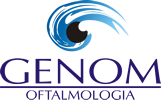
Sessão de Encontro com o Autor – Tema Livre (Pôster)
Código
P028
Área Técnica
Córnea
Instituição onde foi realizado o trabalho
- Principal: Universidade de São Paulo (USP)
Autores
- RUTH MIYUKI SANTO (Interesse Comercial: NÃO)
- Eric D Donnenfeld (Interesse Comercial: SIM)
- Christophe Baudouin (Interesse Comercial: SIM)
- Edward J Holland (Interesse Comercial: SIM)
- Kelly K Nichols (Interesse Comercial: SIM)
- Paul M Karpecki (Interesse Comercial: SIM)
- Mohamed Hamdani (Interesse Comercial: SIM)
- Amir Shojaei (Interesse Comercial: SIM)
Título
LIFITEGRAST EFFICACY AND SAFETY FOR DRY EYE DISEASE: 5 RANDOMIZED CONTROLLED TRIALS SUMMARY
Objetivo
Lifitegrast, a lymphocyte function-associated antigen-1 (LFA-1) antagonist, is approved in the US and Canada for treatment of signs and symptoms of dry eye disease (DED). We report combined efficacy and safety evidence from 5 clinical trials and a post-hoc responder analysis that assessed the percentage of subjects who achieved pre-defined eye dryness score (EDS) reductions.
Método
Randomized, double-masked, placebo (PBO)-controlled trials conducted at multiple US sites: four 84-day efficacy trials (phase 2, lifitegrast n=58, PBO, n=58; phase 3: OPUS-1, n=293, n=295; OPUS-2, n=358, n=360; OPUS-3, n=355, n=356) and a 1-year safety study (SONATA, lifitegrast n=220, PBO n=111). Included adults had EDS ≥40 (visual analogue scale [VAS], 0–100), corneal staining score ≥2.0 (0–4). For efficacy, changes from baseline to day-84 in symptoms (EDS) and signs (inferior corneal staining score [ICSS], 0–4) were evaluated. Responder analysis of subjects who achieved EDS reductions of ≥10, ≥15, ≥20 points or ≥30%, ≥50%, ≥70% (from baseline to days 14, 42 and 84) in the OPUS-2 and OPUS-3 trials. Safety data from all 5 trials were pooled (lifitegrast n=1287; PBO, n=1177).
Resultado
Lifitegrast significantly improved EDS versus PBO in 3 trials: OPUS-1 (treatment effect [TE], 4.7, P=0.0311), OPUS-2 (TE, 12.3, P<0.0001), and OPUS-3 (TE, 7.5, P=0.0003). Lifitegrast significantly improved ICSS in phase 2 (TE, 0.25, P=0.0498), OPUS-1 (TE, 0.23, P=0.0007), and OPUS-3 (TE, 0.17, nominal P=0.0135), but not in OPUS-2. More subjects achieved ≥30% EDS reduction with lifitegrast versus PBO: OPUS-2, day-14, 47.5% versus 30.6%; day-42, 59.8%, 41.1%; day-84, 68.7%, 48.9%; OPUS-3, day-14, 52.6%, 35.1%; day-42, 67.1%, 49.0%; day-84, 74.2%, 60.1% (all nominal P<0.0001). Lifitegrast was well tolerated with no serious ocular adverse events.
Conclusão
Lifitegrast significantly improved symptoms of DED (EDS) as early as day-14 in the OPUS-2 and OPUS-3 trials, improved DED signs in 3 trials and was well tolerated in all trials















